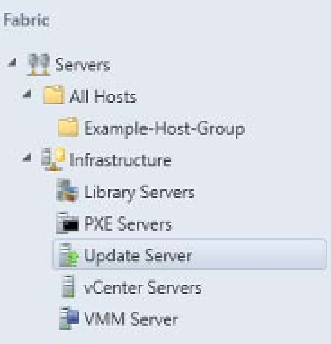Information Technology Reference
In-Depth Information
WSUS server prerequisites
You can use a WSUS server running WSUS 3.0 SP2, which you can install on computers run-
ning the Windows Server 2008 or Windows Server 2008 R2 operating system, or WSUS 4.0,
which is included as a role service for computers that have the Windows Server 2012 and
Windows Server 2012 R2 operating systems. While you could deploy the WSUS role on the
computer that hosts VMM, Microsoft recommends that you deploy WSUS on a separate com-
puter. This will separate the workloads, ensuring that they don't conflict with each other.
Prior to integrating WSUS with VMM, you should install the WSUS role and run the WSUS
Configuration Wizard to perform preliminary WSUS configuration. You should also perform
synchronization. When running run the WSUS Configuration Wizard and performing synchro-
nization, use the default settings unless you have an on-premises WSUS server that you want
to use as an upstream server. If using an on-premises upstream server, remember that you'll
be limited to the updates and classifications that are present on that server.
Although integrating WSUS with VMM doesn't preclude you from also integrating the
same WSUS server with Configuration Manager, it's a better idea to keep the WSUS server
used for updating non-VMM computers in your organization separate from the WSUS server
managed by VMM.
Integrating WSUS and VMM
Integrating WSUS with VMM allows the VMM server to take control of the WSUS server. Once
you have integrated WSUS with VMM, you should manage updates using VMM rather than
the WSUS console.
To integrate WSUS with VMM, perform the following steps:
1.
In the Fabric workspace of the VMM console, click the Update Server Node under
Infrastructure, as shown in Figure 3-37.
FIGURE 3-37
Update Server


